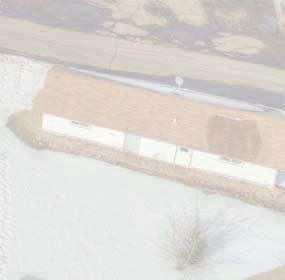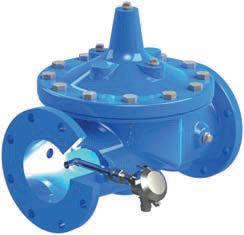























































The Infrastructure Act is paving the way for a better future for water with $55 billion in funding for water, wastewater, stormwater and related resiliency projects.
Our dedicated team of experts is standing ready to provide you with the expertise, services and products you need to strengthen our nation’s water infrastructure. Contact us to learn more.







Executive Board of Directors
Section Chair
Rob Isabel
CDM Smith
Ph: 651-252-3716 isabelrs@cdmsmith.com
Section Chair-Elect
Doug Klamerus
Rochester Public Utilities, Ph: 507-280-1500 dklamerus@rpu.org
Section Past Chair
Uma Vempati
Kimley-Horn Associates Ph: 612-209-1912 uma.mnawwa@gmail.com

AWWA Director

Eric Volk
City of New Brighton Ph: 651-638-2110 eric.volk@newbrightonmn.gov
Section Secretary-Treasurer
Jim Hauth
City of Columbia Heights Ph: 763-706-3711 jhauth@columbiaheightsmn.gov
Assistant Secretary-Treasurer
Miles Jensen
SEH, Inc.
Ph: 651-490-2000 mjensen@sehinc.com
The ideas, opinions, concepts, procedures, etc. expressed in this publication are those of the individual authors and not necessarily those of the MNAWWA section, its officers, general membership, or the editor. The mention of trade names for commercial products does not represent or imply the approval or endorsement of AWWA. This magazine is presented solely for informational purposes
Breeze Magazine is published by
Ph: 866-985-9780 Fax: 866-985-9799 www.kelmanonline.com
Managing Editor - Julia Waterer
Design/Layout - Dani Goulet Marketing Manager - Jeff Kutny jeff@kelman.ca
Advertising Co-ordinator - Stefanie Hagidiakow
©2023 Craig Kelman & Associates. All rights reserved. The contents of this publication may not be reproduced in whole or in part without the express consent of the publisher.
Tricia Christensen
Black & Veatch
Ph: 952-896-0844 christensenp@bv.com

Time flies when you are having fun! It’s hard to believe that more than two months have passed since we got together in Duluth for our Annual Conference. I moved to the state of Minnesota 12 years ago, and I was very thankful for how quickly I was accepted and welcomed by the great Minnesotans in the drinking water industry when I attended my first Annual Conference in Duluth back in 2010. Now, I am truly honored and humbled to be the Chair of the Minnesota Section AWWA.
In my opinion, what makes our Section so special is the people. Through my volunteer work with the Section as the past-Program Committee Chair and the Conference Council Chair, I have had the opportunity to exponentially increase my professional network within our industry, and more importantly, have made numerous life-long friends. If you are interested in growing your professional network, making new friends and helping move our industry forward, I would highly encourage you to reach out to me or any of the other Board members. We would be happy to talk with you about your interests and help connect you with a committee within the Section that shares your passion.
As the Chair for 2022–2023, I am excited to work with the Board and our membership to chart the course for our organization in our post-Covid world. Some of the priorities that we hope to address this year include:


Diversity and Inclusion: I hope we continue to build upon the great work from our relatively new Diversity and Inclusion Committee to improve the diversity within our association through the inclusion of more women and people of color on
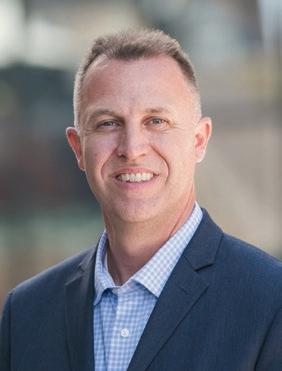
our committees. I also hope we continue to be open to new perspectives and ideas that can move our Section forward.
In 2021, the Section’s strategic plan was updated and strategic objectives developed in the areas of member engagement and development, organizational stewardship, knowledge creation and exchange, and water policy and leadership. Over the next few months, we will be creating strategic plans for each of our Councils to define their purpose and benefit to our membership, determine whether the committees under each Council are still relevant and whether new committees should be added, and to determine each Council’s and committee’s strategic goals and objectives for 2023 and beyond. We will also figure out how to measure and report on each Council’s progress towards their strategic objectives.
Social Media Presence: We hope to increase the frequency of and to improve on our social media communications in 2023. This would be a great opportunity for some of our younger, and dare I say, more social media savvy members to get involved!
Governing Document Update: It’s been many years since the Section’s policies and procedures have been updated. Our goal in 2023 is to review and update these as needed to ensure they reflect how the Section plans to operate in the future.
I want to close this message by thanking you all again for trusting me to be the Chair of this amazing organization. I am always in awe of the silent work that the people in our industry do everyday to keep the water flowing. I look forward to working with the Board and all of our membership over the next year. Thank you! •







We are an industry that truly believes that we can always do better. Our entire industry is always looking for ways to provide a better service to our consumers. Over the last century we have made colossal strides to improve our product in every way possible. From pumping, to treatment, to delivery, our practices and sheer ingenuity have gone beyond the dreams of our predecessors who were only just beginning to envision high-pressure water systems.

Just imagine, when we started as an industry, we were installing wooden water mains and lead service lines with no treatment to provide water to our communities. Day by day and decade by decade, we worked as a team to develop better products and improve our


safe and reliable drinking water to all of our customers.



One key milestone in our industry was the introduction of chlorine disinfection. The first city to start disinfecting with chlorine was Jersey City, New Jersey in 1908. The following decade saw thousands of cities across the United States start to disinfect with chlorine. Chlorination has been defined as one of the greatest advances in public health in the 20th century. America put their minds together in a gargantuan effort to keep humans safe while consuming an everyday necessity, and over time the world of water has adopted many of our methodologies across the globe.
I have said this before, and I will continue to live by what was told to me at my very first water operator conference: “By providing safe and reliable drinking water, we


Over the span of the 20th century, chlorine disinfection along with antibiotics like penicillin and the Salk polio vaccine have caused death rates from diseases to plummet. Pneumonia, tuberculosis, and enteritis have dropped out of the top ten reasons of death, and heart disease, cancer, and stroke have taken their place.
We continue to do better, but as we all know, we are not anywhere near hitting our peak potential. As new regulations come along and improved products and processes are introduced, we continue to serve our communities more diligently than we have ever done before. Continue to push yourselves: create, invent, and invest effort into our industry. We can do better – in mindful action, make each day of work more fulfilling by providing a safe and reliable product to the multitudes of consumers, who happen to be our neighbors, our families and ourselves. •




Nearly three-in-four people perceive their home’s tap water as safe, according to a survey conducted by Morning Consult on behalf of the AWWA, and nearly 80 percent trust their water utility. The June 2022 poll, titled “Public Perceptions of Tap Water,” included 1,977 Americans served by water utilities.

The survey showed approximately 70 percent of respondents rate the quality of water at their faucet as excellent or good, a level nearly equal to a similar survey conducted in June 2021. survey. However, fewer Black adults rated their water as “safe” (six percent decline) and more rated their water “unsafe” (seven percent increase) compared to June 2021. At the same time, Black adults (26 percent) and Hispanic adults (22 percent) were more likely than White adults (16 percent) to report that the safety of their water supply has improved over the past five years.

With inflation on the rise in the United States, the most recent survey showed that one-third of respondents were struggling to pay their water bill on time, an eight percent increase from June 2021. The consumer price index rose 9.1 percent from June 2021 to June 2022.
“It’s good to see the vast majority of people have confidence in both their tap water and their water utility,” said AWWA CEO David LaFrance. “At the same time, we have work to do to gain and maintain trust in tap water, especially in communities where historical inequities have existed. With affordability challenges rising, focusing on disadvantaged communities is even more important.”
Seventy-seven percent of respondents indicated they have “a lot” or “some” trust in their water utility. Respondents who are aware of the frequent water quality tests at their utility indicated a much higher level of trust than those who are unaware. Three quarters of respondents (73 percent) say they are generally satisfied with the water. However, that figure rose to 88 percent among those who said they are aware of frequent testing.
Approximately three-fourths of respondents say they are generally, very or somewhat satisfied with the water at their faucet. Respondents’ satisfaction with their water utility has increased by four percent since the June 2021 survey.



Three quarters of respondents strongly or somewhat support continuing Congressional assistance to help with paying water bills for those who may not be able to afford it. Respondents across key demographics show support for this policy, with the most support expressed by Black respondents. The struggle to pay a water bill is most strongly expressed by lower-income, Black and Hispanic respondents.
This poll was conducted between June 22–23, 2022, and it reflects a sample of 1,977 U.S. respondents receiving water from a public water supply. The interviews were conducted online. Results from the full survey have a margin of error of plus or minus two percentage points. •


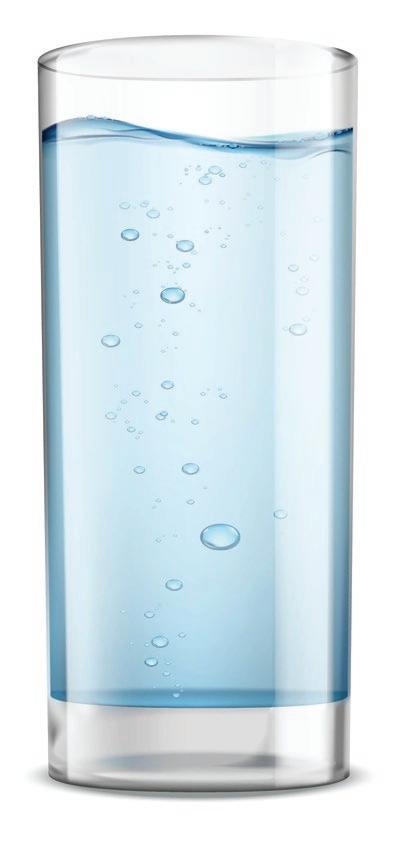

The annual Drinking Water Institute for Educators was held in August in Red Wing. The Minnesota Department of Health and Minnesota Section of American Water Works Association have been conducting these institutes since 2001. Science teachers from around the state come together and develop action plans to create inquiry-based activities that they can integrate into their existing science curriculum. The 2023 Drinking Water Institute will be August 7–9 in Minneapolis. More information, please visit www.health. state.mn.us/communities/environment/ water/institute.htm. •
“The 2023 Drinking Water Institute will be August 7–9 in Minneapolis. More information, please visit www.health.state.mn.us/ communities/environment/water/institute.htm.”
AWWA’s Water 2050 initiative seeks to establish a long-term vision of the future of water. This collaborative exploration will chart a course for a successful and sustainable water sector. We will engage in a thoughtful, intentional and inclusive discourse that results in bold, achievable goals.

Ultimately, Water 2050’s influence will extend beyond the water community, fostering partnerships and cross-sector collaboration for mutual and global benefit.

Starting in 2022 and working through the end of 2023, Water 2050 will:
• Engage in meaningful conversations. Thought leaders from within and outside the water sector will gather at intimate “think tanks” to examine the future of water through the prism of five key drivers.
• Enlist strategic partners. Collaboration among water utilities, service providers, academia, water-sector organizations, and non-traditional partners will be essential. We’ll also reach beyond the water sector to engage corporate water users, non-profit organizations and other stakeholder groups for fresh insights.

• Foster intergenerational responsibility. Todays and tomorrow’s water professionals and leaders must work together to create a successful future. The voices of young and emerging professionals will be key throughout the initiative.
• Capture collective knowledge. AWWA will report on insights from each think tank and publish additional guidance to support the water community in realizing the Water 2050 vision. All of this supports the critical mission of the water community: safe water, healthy people and a sustainable planet. We will do this by examining five critical drivers to the future of water. These drivers will be considered by the Water 2050 think tanks and shape all future work supported by this initiative.
1. Sustainability. Managing our planet’s limited water resources and built infrastructure for water is paramount. Climate change is among the biggest risks. It will bring conditions that are more fierce and less predictable: extended droughts and heatwaves, increased hurricanes and wildfires, and severe winter storms.
The future will require skillful and creative stewardship of our most vital natural resource, as well as innovative approaches to keep water infrastructure strong and resilient.
2. Technology. As the world enters the fourth industrial revolution, water professionals have access to new technologies that are changing the way they interact with water resources, water systems and the people they serve. Advances in data, analytics, the Internet of Things (IoT), machine learning and artificial intelligence will increasingly empower consumers and influence water system operations. Adoption of new technologies will solve complex problems and sometimes introduce unintended challenges.
3. Economics. Water is a critical economic engine for North American communities and across the globe. Increasingly, the water community is asked to do more with less, while also addressing rising infrastructure needs. We must consider important economic factors such as regionalization, supply chain resilience, decentralized treatment, ESG approaches to assessing risks and value, and the benefits of a circular economy. Rate-setting will occur in a world more keenly aware of equity and affordability challenges.
4. Governance. The roles of federal, provincial, state and local governments significantly impact how water utilities are operated and regulated. Both economics and governance will shape the model of tomorrow’s water utilities. Some communities may turn to regional solutions to gain efficiencies. As regulatory structures evolve, communities will have to evaluate new approaches, such as fit-for-purpose standards and decentralized treatment.
5. Social and Demographic. Public interest and concern about water quality and equity is rising, which means all communities must work to strengthen public trust. Simultaneously, potential population shifts between urban and rural areas are creating resource and infrastructure challenges — while also forcing community-driven water solutions. Population growth in water-stressed communities will require innovative thinking to manage limited supplies. •
water systems to industrial pumping applications, from storm water to metering, we’re experienced and ready to make your job easier. Our crew specializes in combining experience and innovation to offer you solutions for your challenging projects. Contact us today to learn more about how DSG can help you.


MWRF MISSION:
By providing sustained water research funding and partnerships with outside stakeholders, UMN CEGE can develop innovative research to improve water treatment technologies and water quality in the environment and to enhance public health, while also attracting more water research experts to the University.
Bernie Bullert (Chair)
BCE 1968, MBA 1977, UMN SL-serco
Michelle Stockness (Vice Chair)
BSCiE 2001, Univ. of Missouri-Columbia Barr Engineering David Allen
BA Mass Comm. 1993, UMN SL-serco
Lisa Cerney
BCE 1999, UMN Hennepin County
Tricia Christensen
BSCE 2001, South Dakota State Univ. Black & Veatch
Bo Johnston
MSCE 2005, UMN Black & Veatch
Andrew Ohrt
MSCE 2005, UMN West Yost
Naeem Qureshi
MSCE 1985, UMN Sambatek
Karl Streed
BCE 1972, UMN
Stew Thornley
BS Bus. Administration 1981, UMN MN Department of Health
Shannon Wolkerstorfer UMN External Relations
Author: Tricia Christensen is a MWRF Advisory Committee member. She has spent her 20 plus year career in water and is currently the Upper Midwest Planning and Asset Management Lead at Black & Veatch. She can be contacted at christensenp@bv.com.
The second installment in the four-part Minnesota Water Research Fund series focuses on the importance of research at the University of Minnesota and how research helps Minnesota as a whole.
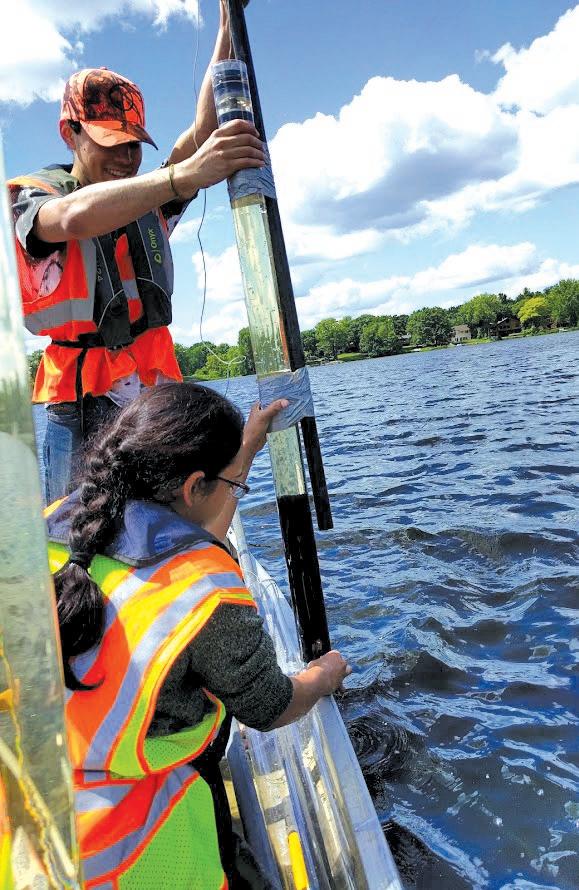
Minnesota, the Land of 10,000 Lakes. It comes as no surprise that water is a big deal in Minnesota. Management of all water resources including streams and lakes, potable water supply, wastewater, storm water, and the infrastructure necessary to make all these pieces work together is a top priority. The Minnesota Water Research Fund (MWRF) provides support for research in the areas of water resource management and water treatment. This support benefits local Minnesotans but could also improve lives far beyond the Land of 10,000 Lakes.
Research conducted at universities advances society through new ideas, technologies, treatments, and cures. Research also helps educate students to be scientific leaders and innovators. When Bernie Bullert envisioned the start of a water research center at UMN, he already knew they were doing great research in areas related to water resources. He had worked to initiate research programs during his time as a leader in the water utility departments of both St. Paul and Minneapolis and he encouraged the Metropolitan Council to sponsor research. After retirement, Bullert turned his focus outside of the
Twin Cities, to rural Minnesota. Rural communities are smaller and don’t have the money or the set-up for research, yet these communities face water problems that need solutions. Bullert wanted to build upon the research rich foundation at UMN and start a research fund of his own, with a focus on supporting water research that can benefit small communities where funds for research, training, and education are scarce.
“Water is our most valuable resource. In order to maintain or improve water quality and availability, we must continue to push the boundaries of what we know through science.”
– David Allen, MWRF Advisory and CEO of SL-serco

Bullert’s long and successful career was devoted to making sure Minnesota’s largest cities had safe drinking water. It was only natural that his water research fund would be based out of Minnesota. The MWRF aims to perform research that solves current and emerging water quality problems, some of which are unique to Minnesota’s geographic area. Minnesota’s cold climate and proximity to

the Upper Mississippi Watershed provide a unique natural setting for research. The fund now seeks to bring in industry partners to collaborate on research that might lead to the development of water technologies, which could stimulate economic development.

In addition to solving problems, MWRF research helps to train engineers and scientists preparing them for the future and building the State’s technical



capacity. The MWRF supports faculty, graduate, and undergraduate student research. Research that includes undergraduate students is beneficial as it promotes scholarship, builds confidence, increases collaboration skills, and facilitates real-world application of class topics. Engaging undergraduate students in research prepares them for important graduate work or professional roles after graduation.

MWRF Vision: Enable the University of Minnesota to be a national leader in innovative research to improve public health and protect Minnesota’s water resources.
Everyone needs clean water to survive. The MWRF has big ideas that are grounded in applicable research with the goal of providing practical solutions for watersheds in Minnesota and beyond. Acting on the best available knowledge of water resources should enhance Minnesota’s economic robustness, and the health of its citizens now and in future generations. This fits with Bullert’s purpose of making the world, or at least Minnesota, a better place.
The third installment in the four-part MWRF series will focus on students and the research that is being funded by the MWRF. More information about the MWRF can be found online at cse.umn.edu/ cege/minnesota-water-research-fund.
The MWRF is looking for partners. We have a growing list of organizations, private companies, and individuals supporting MWRF. Partnership opportunities are available, contact Bernie Bullert at bernie.bullert@sl-serco.com for more information or refer to online form z.umn.edu/sponsormnwaterresearch to indicate your partnership support. Your support of the MWRF drives discovery! •




“Water is a fluid business. We cannot allow our knowledge, technologies, or management practices to become stagnant.
One way to help ensure that Minnesota and all Minnesota’s citizens benefit from our latest knowledge of water resource management, is to establish a statewide center for water research.”
– Bernie Bullert MWRF Founder

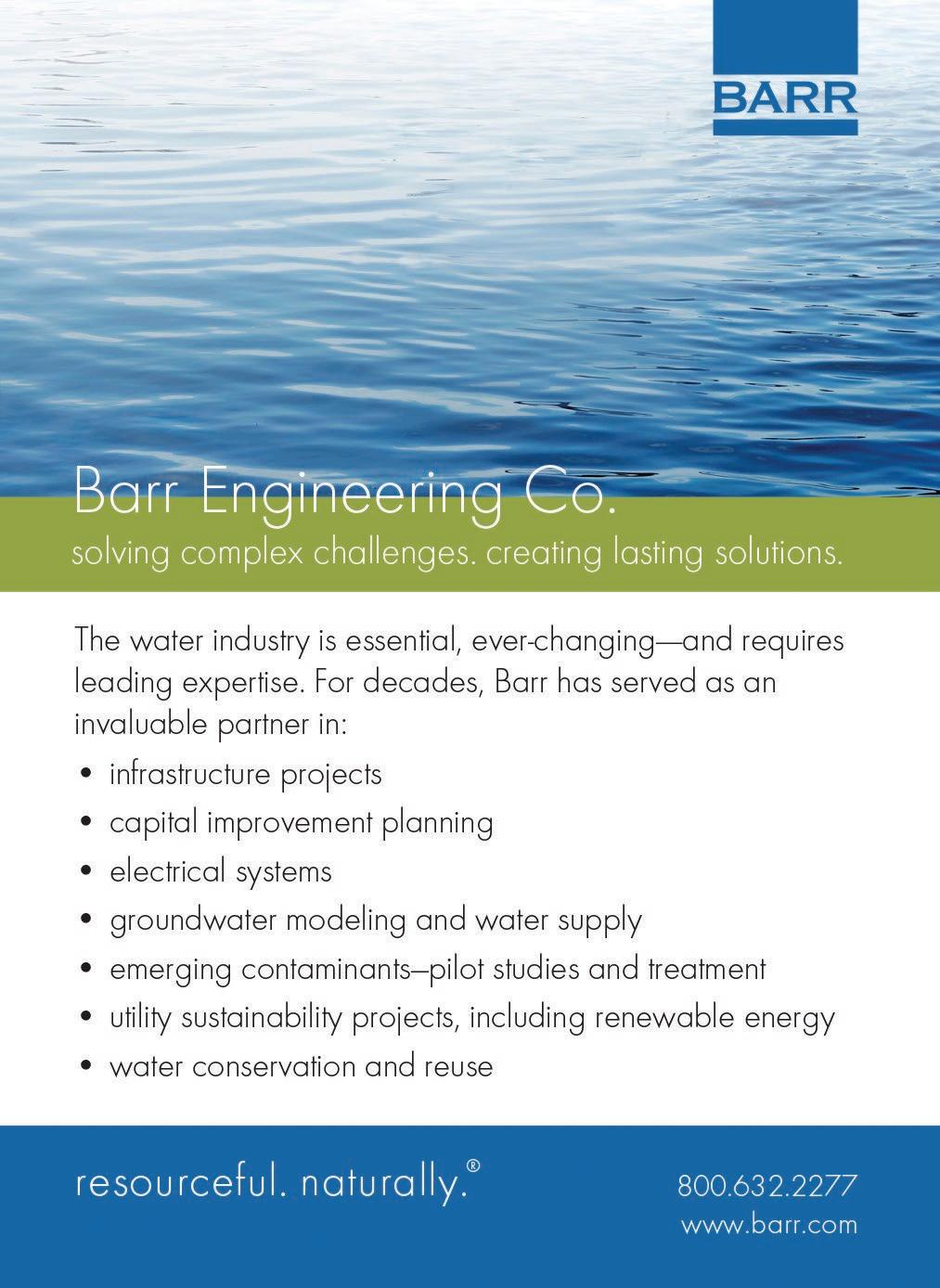

Since 1913,
Green has provided solutions that build communities and improve lives.
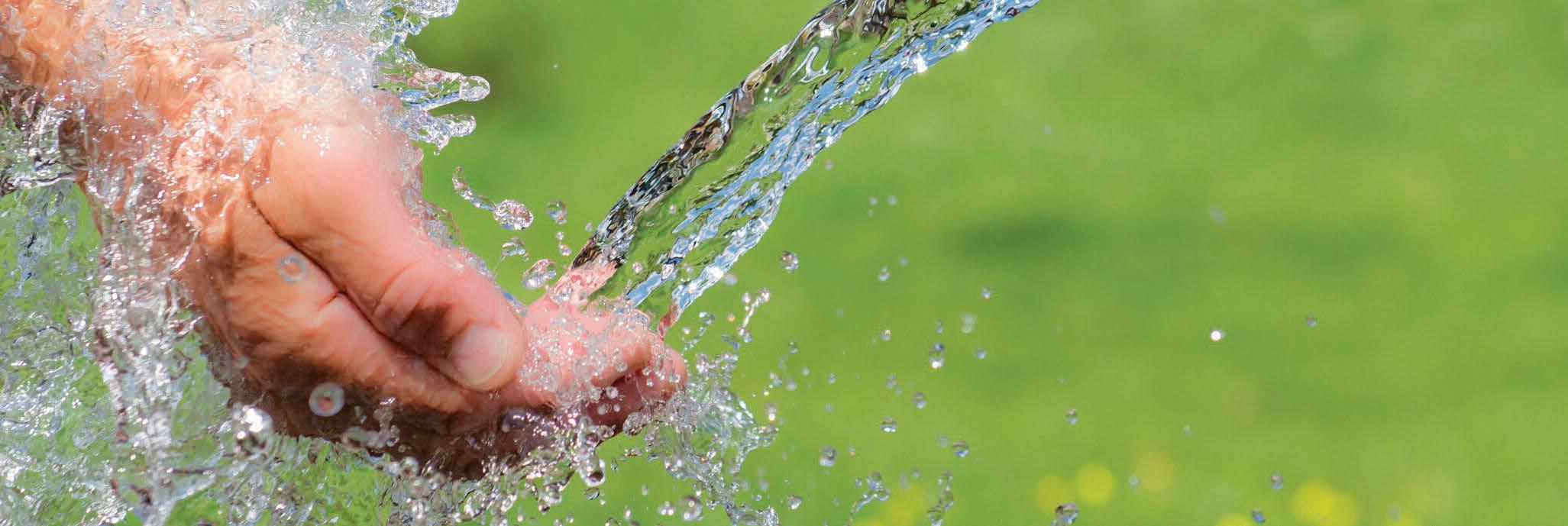

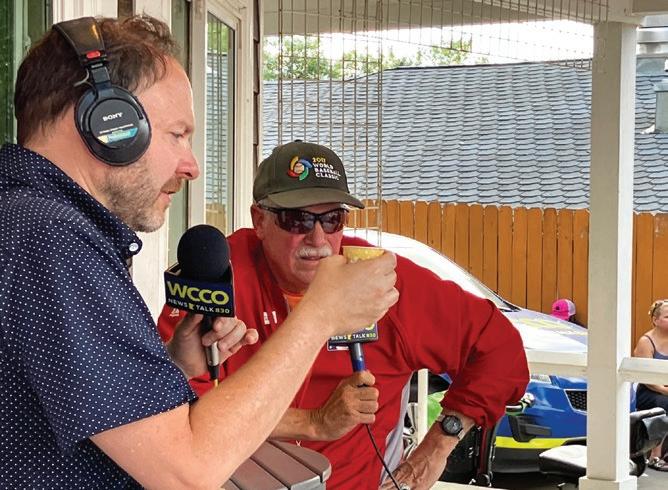

Minnesota American Water Works Association (AWWA) held its annual Great Minnesota Tap Water Taste Test with the audience serving as judges. Saint Peter was voted the best tasting water in Minnesota. Its water – along with the water of the other finalists, Bloomington, Chaska, and East Grand Forks – was brought to the WCCO Radio booth, where audience members tasted the water alongside contest host Jason DeRusha. Other cities entering water were St. Paul, Eden Prairie, Apple Valley, Shakopee, Lino Lakes, Minneapolis, Mankato, Chanhassen, Savage, Crookston, St. Cloud, North Branch, Moorhead, North St. Paul, Carver, Le Seuer, and Hastings. •
 WCCO Radio Host Jason DeRusha and Stew Thornley
Some young fair-goers take part in the taste test
WCCO Radio Host Jason DeRusha and Stew Thornley
Some young fair-goers take part in the taste test






Across the nation, communities big and small, urban and rural are experiencing the consequences of aging and failing infrastructure. Decades of disinvestment, combined with more frequent and heavier rain events, are pushing many cities to the brink of catastrophe.

In 2022, stories of a ‘water crisis’ dominated the headlines as nearly all of Jackson, Mississippi lost access to safe drinking water. In August, severe flooding compromised an already vulnerable municipally-owned and operated water treatment and distribution plant. After decades of deferred maintenance, underinvestment and neglect, it was not a question of ‘if’ but ‘when’
 Matt Croaston,Communications and Outreach Coordinator for the City of Minneapolis, Division of Water Treatment and Distribution Services
Matt Croaston,Communications and Outreach Coordinator for the City of Minneapolis, Division of Water Treatment and Distribution Services
Fortunately, time and time again, when duty calls, we see dedicated public servants rise to the challenge. The crisis in Jackson was no exception.
October 1st, dozens of Jackson-area neighborhoods remained under tap water boil orders and largely reliant on bottled water. His primary task was to reconstruct water treatment operations without any documented standard operating procedures. His deployment consisted of troubleshooting and finding innovative solutions to quickly emerging problems. Later, Matt worked with emergency management staff to develop a playbook that could be deployed if another crisis arose.

Rasmussen joined water colleagues from Virginia, Arizona, and Massachusetts in a weeks-long effort to restore the plant to adequate service. “I was heartened to see how quickly colleagues from other parts of the country promptly took temporary ownership for the restoration of service. People truly committed themselves to this mission as if it were in their own backyard”. Matt also expressed admiration for the dedicated work of the home-town operators who normally manage the plant. In fact, there was a quote on the wall of the facility that read, “amazing, but not surprising”: a reference to the extraordinary resilience in the face of daunting challenges encountered.


For Matt, working as a water treatment operator is about a lot more than the paycheck. A career in public service offers a sense of accomplishment and commitment to community. Public Works departments across the nation ‘make normal happen.’ People often see the disruptions and detours that come with Public Works projects and fail to understand the essential behind-the-scenes work that ensures we have reliable and safe water coming out of our taps.
Minneapolis has a strong track record of making the necessary investments when a worthy need emerges. WTDS recently implemented asset management principles to execute more data-driven decision making. The utility also successfully expanded its cleaning and lining initiative/ program from eight to twenty miles annually and recently modernized its filtration systems by integrating granular activated carbon filters and other best practices to update its filtration plant built in 1925.
The lessons of Jackson are obvious and numerous. Water is essential to human life. Delaying investment in critical infrastructure harms community health and economic vitality. Matt has a renewed appreciation for the duty bound and talented staff that ensure that high quality water is delivered to Twin Cities customers every day. •




Steve
ead BIM/Revit Specialist

The 2022 MN AWWA Annual Conference was a smashing success. Members and colleagues were welcomed back to another in person meeting in Duluth, MN. The 106th Annual Conference featured several speakers including Chi Ho Sham (AWWA Past President), Bob Sterner (Director of the Large Lake Observatory, UMN), Adesewa Adesiji (Workforce Strategy Consultant, MN DEED), and Kevin Morley (Manager, Federal

Relations, AWWA). Conference attendance exceeded 575 attendees from across MN’s water sector.


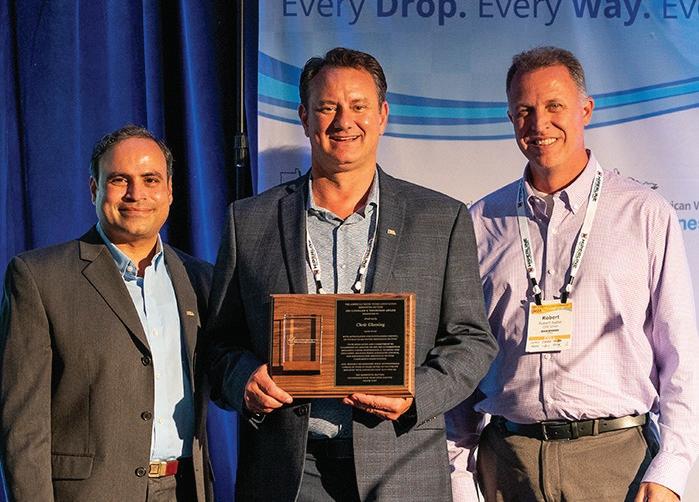


Highlights of the Conference included Tuesday’s sporting events and the Beer & Bags Tournament held at Canal Park Brewing Co. Competitions were in full swing on Wednesday in the vendor hall, where the City of Duluth was declared the winner of the Drinking Water Taste Test.

Thursday was packed full of educational and informational presentations, which were followed by the AWWA Appreciation Night Dinner and Awards. The Young Professionals Trivia Tournament had a great turnout; the questions were challenging, and everyone had a chance to test their skill (or luck) on the Plinko Board. Friday morning, speakers and a farewell lunch sent conference goers on their way.

Steve
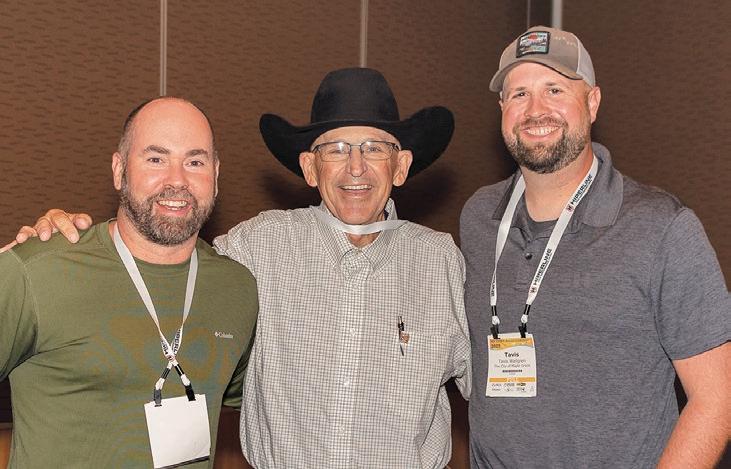











Section
MN


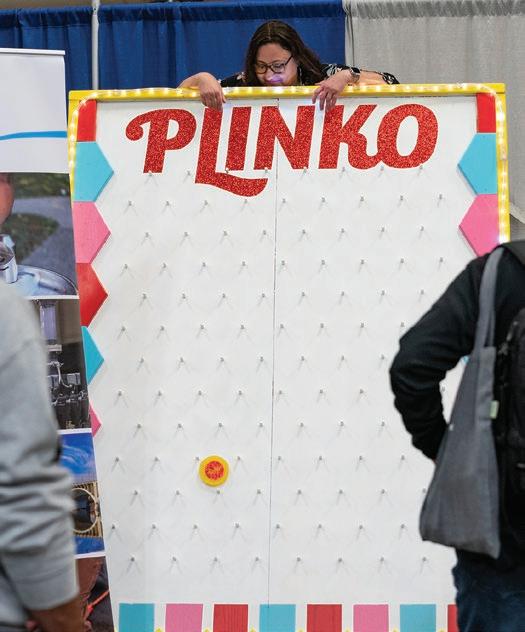






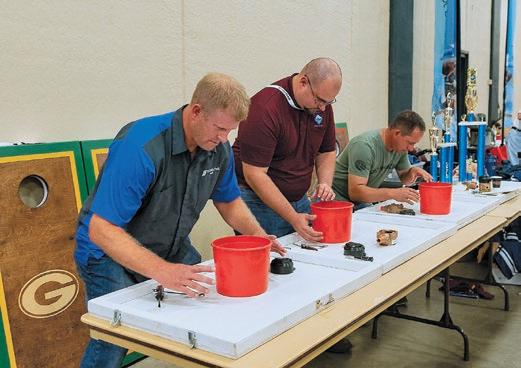

The southwestern Minnesota city of Pipestone went through a decade-long odyssey of water issues and emerged triumphant with a holistic solution.
The city of 4,200, known for pipestone quarries considered sacred to many tribal nations, had operated for years with chemical addition at four wells, ranging in depth from 500 to 700 feet. Even though the wells were relatively deep, a rock ledge within 75 feet of the ground made the area vulnerable to contamination of its aquifers. Although contamination from the surface wasn’t a problem, by 2009, Pipestone had levels of naturally occurring radium and gross alpha emitters approaching the legal limits.
“We were right on the threshold. One time it would tip [the limit] and the next time it wouldn’t,” said Joel Adelman, who first started working for Pipestone in 1995 and has been its water/wastewater supervisor since 2004. The city was addressing the radionuclides at the same time it was being contacted by both the Minnesota Department of Health (MDH) and Minnesota Pollution Control Agency (MPCA) over another issue.
“It was our chloride discharge,” explained Mayor Myron Koets. The city estimated that about 75 percent of the chloride contribution coming into its wastewater plant was from the brine used for regenerating home water softeners.
Pipestone has raw-water levels of about 40 grains (680 parts per million) of total hardness. Residents needed their own softeners to reduce the levels, but the in-home treatment was contributing to
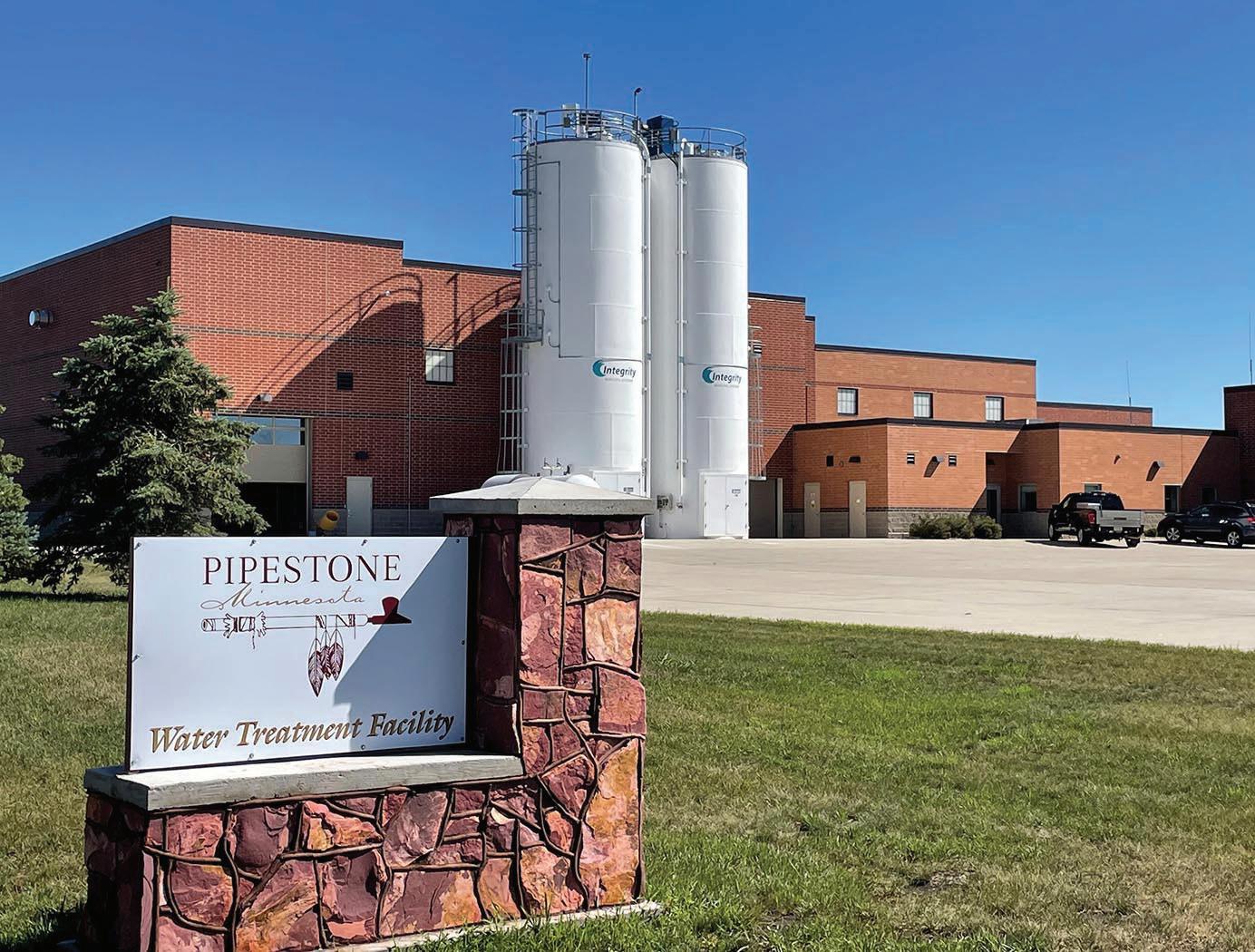
wastewater problems with high levels of chloride, which is toxic to aquatic species.
Pipestone looked beyond what to do at the wastewater plant; it focused on treatment of the drinking water that would include softening at the plant, reducing or
eliminating the need for in-home softeners. In addition to addressing many issues related to health, the environment, and the aesthetic quality of the water, this approach paved the way to funding mechanisms related to both water and wastewater.
Pipestone looked beyond what to do at the wastewater plant; it focused on treatment of the drinking water that would include softening at the plant, reducing or eliminating the need for in-home softeners.
“They were one of the first systems in the state to deal with chlorides by treating the drinking water,” said Chad Kolstad, the coordinator for the MDH Drinking Water Revolving Fund (DWRF). In addition to a DWRF loan, Pipestone received a point-source implementation grant to deal with chlorides. “That’s why funding came into the balance so nicely,” Kolstad added regarding the additional money made available.
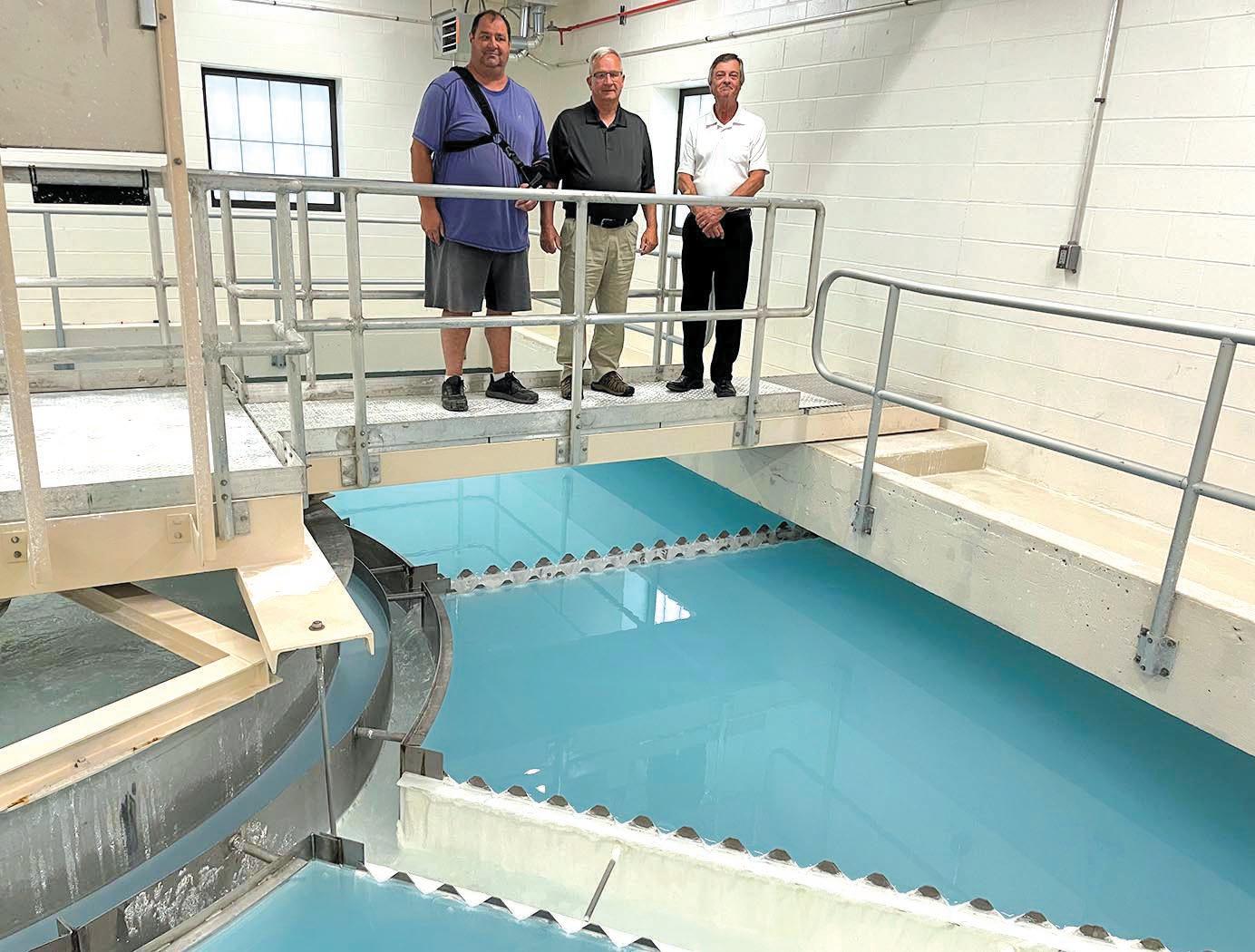
Adelman toured water treatment plants in the region to see what other communities were doing as the city explored options with the engineering firm of Bolton & Menk Inc. of Mankato, Minnesota. Reverse-osmosis (R-O) treatment was considered, but the high rate of water loss through R-O would have made it unfeasible. “There wasn’t enough capacity on the wastewater side if we have any infiltration issues,” said Adelman.
 Joel Adelman, Myron Koets, and Jeff Jones over the clarifier.
Joel Adelman, Myron Koets, and Jeff Jones over the clarifier.
The process finally chosen for a new water treatment plant incorporated aeration, softening, and filtration. Construction began in 2017 on a 1.15 million-gallon-per-day plant on the northern edge of Pipestone. Water from the wells (including a fifth well drilled as part of the project) is pumped to the top of an aerator, comprised of numerous pipes through which the water flows. The aerator oxidizes iron and manganese and also strips carbon dioxide from the water, facilitating the softening that follows.
The lime and soda ash used for softening cause calcium carbonate and magnesium hydroxide to form precipitates that are removed in the clarifier and gravity filters. Lime also raises the pH of the water, which helps with the softening reactions. Following the clarifier, water flows to the recarbonation tank, where carbon dioxide is added to the water to adjust the pH of the water to a more neutral level.
After the recarbonation tank, the water flows by gravity into three 12-by-14-foot filter basins consisting of 15 inches of anthracite and 15 inches of sand. The filters remove the iron and manganese, which were oxidized to form rust particles in the previous stages, and any remaining calcium and magnesium precipitates that were not removed in the clarifier.
The material trapped by the filter beds is removed by backwashing. The backwash water flows to 60,000-gallon reclaim tanks and is held to allow particles to settle out. The clear water is returned to the beginning of the process, and the settled solids are pumped to the sludge holding tank.
The filtered water flows to a 450,000gallon clearwell and reservoir. Chlorine is added before water reaches the reservoir and again as the water is pumped to the distribution system. High-service pumps send water to two water towers and finally out to the residents.
As the plant went on line in 2019, Pipestone worked with citizens to adjust or remove their home softeners, which allowed the city to meet its limits on chloride discharge.
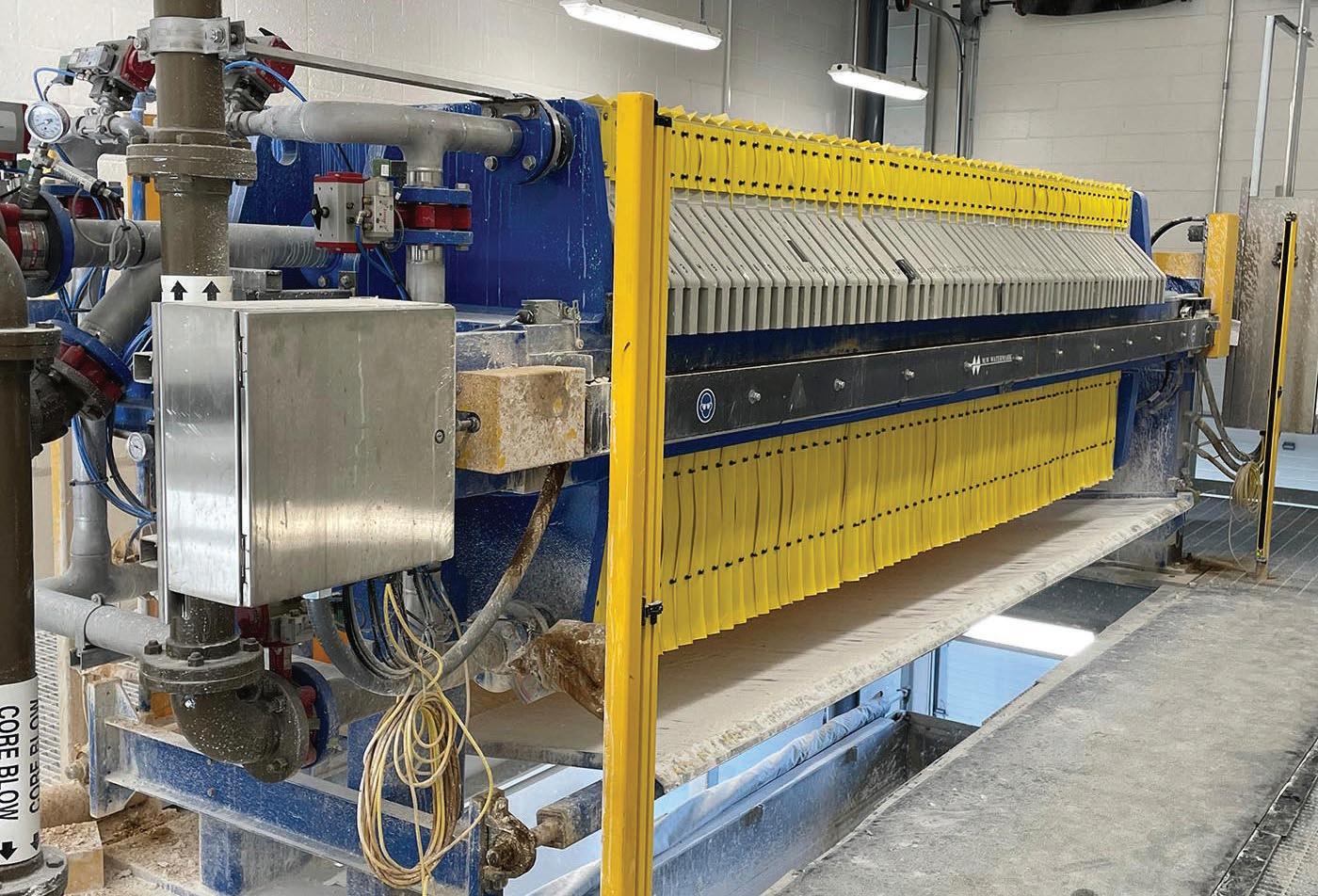

The $15.4 million project was funded by a DWRF loan of $8.4 million and a point-source implementation grant
of $7.0 million from the state. The inability of the Minnesota legislature this year to approve a bonding bill was a disappointment for city officials, but Pipestone was still able to greatly limit rate increases to finance the project. “It’s the cost of having good water,” said city administrator Jeff Jones.
For its big-picture vision and innovation, Pipestone received an Aquarius Award through the U. S.
Environmental Protection Agency’s Drinking Water State Revolving Fund program for its excellence and leadership in the financing and construction of a new water treatment plant to address public health and environmental issues. “By taking a holistic approach to solving their problem, the city was able to meet both their public health and environmental standards far more cost effectively,” said Kolstad. •
The sludge press in the new water plant.



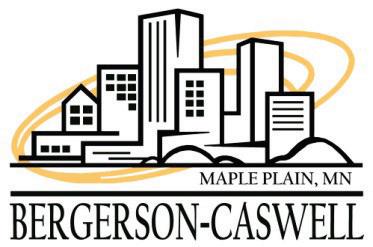
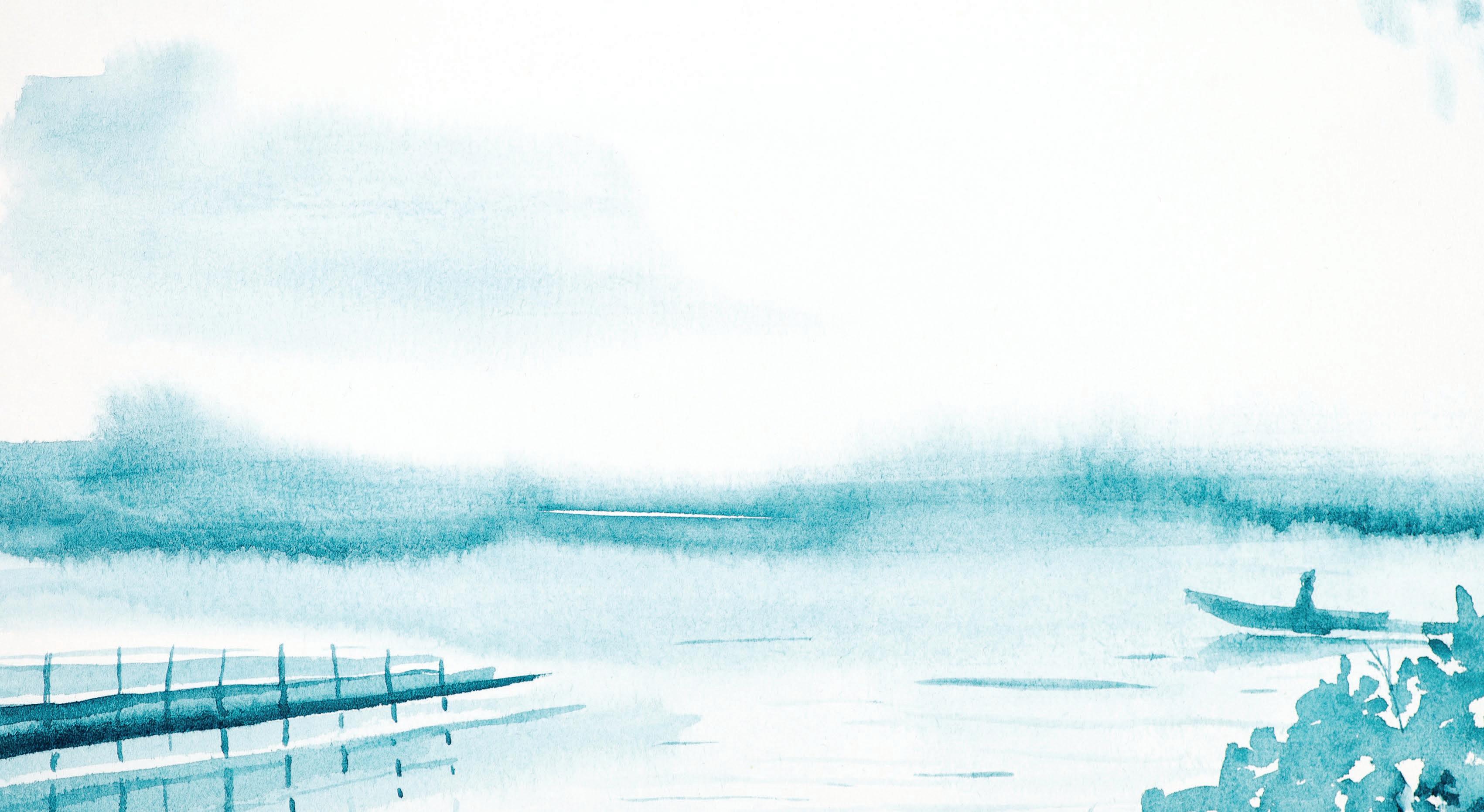
Communities, citizen groups, and individuals can take an active role in protecting their drinking water sources from contamination. The resources below provide information about source water protection and steps you can take at the local level to protect your drinking water.
Your drinking water utility includes information about the drinking water source in their annual drinking water quality report, also called a Consumer Confidence Report (CCR). A CCR also tells you how to get a copy of the source water assessment for your drinking water source. You can find more information online about your CCR at www.epa.gov/ccr
Use and Dispose of Harmful Materials Properly Don't pour hazardous waste down the drain, on the ground, or into storm sewers. This could contaminate the soil, groundwater, or nearby surface water. A number of products used at home contain hazardous or toxic substances that can contaminate ground or surface waters, such as:
• Motor oil
• Pesticides
• Leftover paints or paint cans
• Mothballs
• Flea collars
• Household cleaners
• A number of medicines
EPA's Household Hazardous Waste program has more advice on how to safely manage and reduce the use of these materials.
Think Twice about Lawn and Garden Chemicals
Limit the use of pesticides or fertilizers, and always follow the label directions. Many fertilizers and pesticides contain harmful
chemicals which can travel through the soil and contaminate groundwater or run off in stormwater to rivers, streams, and lakes. EPA evaluates pesticides to ensure that when they are used according to label directions, they will not harm people, non-target species or the environment.
Groundwater can be contaminated by poorly treated or untreated household wastewater, which poses dangers to drinking water and to the environment. Malfunctioning septic systems release bacteria, viruses, and chemicals to local aquifers and waterways. The average household septic system should be inspected at least every three years by a septic service professional. Household septic tanks are typically pumped every three to five years. Alternative systems with electrical float switches, pumps, or mechanical components should be inspected more often, generally once a year. Find more information on the SepticSmart Homeowners webpage.
In homes that use septic tanks, prescription and over-the-counter drugs flushed down the toilet can leach into the ground and seep into groundwater. In cities and towns where residences are connected to wastewater treatment plants, prescription and overthe-counter drugs poured down the sink or flushed down the toilet can pass through the treatment system and enter rivers and lakes. These water sources may flow downstream to community drinking water supplies. Water treatment plants are generally not equipped to routinely remove medicines.
EPA encourages the public to take advantage of pharmaceutical take-back collection programs that accept prescription or over-the-counter drugs, as these programs offer a safe and environmentally-conscious way to dispose of unwanted medicines.
Water availability is also vital for the reliable delivery of safe drinking water. Droughts, floods, over pumping of aquifers, river diversions, or other management practices can affect the availability of drinking water sources. Changes in water availability can also impact water quality.
The quality of source water used by a drinking water treatment plant has a direct impact on its operations. It can be impacted by the local geology, topography, land use, and activities within and outside the watershed or wellhead capture zone.
Water pollution is often described as originating from a ‘point’ or ‘nonpoint’ source. Point source pollution can be traced to a specific location, like a pipe that is releasing treated wastewater to a river. Nonpoint source pollution generally is described as pollution from large, nonspecific sources, for example; land runoff, rain, snow, atmospheric deposition, drainage, seepage or hydrologic modification. Common types of nonpoint source pollution are runoff of fertilizer and pesticides from agricultural land or residential areas, and sediment from eroding streambanks. States report that nonpoint source pollution is the leading remaining cause of water quality problems. The effects of nonpoint source pollutants on specific waters vary and may not always be fully understood assessed. However, these pollutants have harmful effects on drinking water supplies, recreation, fisheries and wildlife.
The following contaminants can affect drinking water treatment plant operations or human health. While all contaminants can pose a challenge to drinking water utilities, the following contaminants present common and complex challenges.
Nitrate is a necessary nutrient for plant and animal growth. However, elevated levels of nitrate and other nutrients may lead to harmful algal blooms and other ecological degradation. High levels of nitrate are also harmful to human health. EPA has a national primary drinking water regulation for nitrate with a maximum contamination level (MCL) of 10 mg/L (as nitrate-N) for most public water systems. Sources of elevated nitrate in surface and groundwaters include fertilizer runoff, leaking septic tanks, damaged sewage lines, cross-connections, industrial discharges, and atmospheric deposition. Drinking water treatment for high levels of nitrate in source water can be complex and costly. In source waters where harmful algal blooms are present, drinking water utilities may also consider monitoring and treating for cyano-toxins.
Pathogens are microorganisms that can cause illness. Pathogens in surface and groundwaters may come from animal waste (including from wildlife, livestock, and pets), malfunctioning
or poorly sited septic tanks, damaged sewage lines or crossconnections, and combined sewage overflow events.

•
Suspended sediment and turbidity are measures of water clarity or how many solids are in the water. High turbidity can also be an indicator of high total organic carbon (TOC). This material must be settled out or filtered during the drinking water treatment process. High turbidity events can overwhelm a treatment plant's capacity to filter the water and result in the treatment plant choosing to temporarily shut-off an intake in order to protect their operations. Additionally, TOC can react with certain disinfection chemicals and cause harmful disinfection by-products.
Contaminants of emerging concern (CECs), including pharmaceuticals and personal care products (PPCPs), perand poly-fluoroalkyl substance (PFAS), and cyanotoxins may be found in surface water or groundwater. Many of these contaminants are not regulated by the Safe Drinking Water Act. However, they are considered when developing the Contaminant Candidate List, a list of unregulated contaminants known or anticipated to occur in public water systems. CECs have a variety of sources including industrial discharge, wastewater discharge, runoff, and atmospheric deposition and EPA continues to work to understand the potential health impacts. •

Breeze is made possible by the companies below who convey their important messages on our pages. We thank them for their support of The Minnesota Section of the American Water Works Association (MN AWWA) and its publication and encourage you to contact them when making your purchasing decisions. To make it easier to contact these companies, we have included the page number of their advertisement, their phone number, and, where applicable, their website.
Company Page Phone Number Web Address

AE2S 23 701-364-9111 www.ae2s.com
Apex Engineering Group 31 701-373-7980 www.apexenggroup.com
Barr Engineering Company 18 952-832-2619 www.barr.com
Bergerson Caswell 31 763-479-3121 www.bergersoncaswell.com
Bolton & Menk, Inc. 35 507-625-4171 www.bolton-menk.com
Brown and Caldwell 18 800-727-2224 www.brownandcaldwell.com
CORE&MAIN 6 952-937-9666 www.coreandmain.com
Dakota Supply Group 14 800-328-3976 www.dakotasupplygroup.com
E.H. Renner & Sons, Inc. 7 763-427-6100 www.ehrenner.com
Electric Pump, Inc. 16 800-211-6432 www.electricpump.com
ESS Brothers & Sons, Inc. 14 763-478-2027 www.essbrothers.com
Ferguson Waterworks 3 www.ferguson.com/waterworks
General Repair Service 2 800-767-5151 www.generalrepair.com
Hawkins Water Treatment Group 12 800-328-5460 www.hawkinsinc.com
HR Green, Inc. 18 800-728-7805 www.hrgreen.com
ISG 10 507-387-6651 www.isginc.com
Janssen Machine Co. 27 218-493-4470 www.janssenmachine.com
M.E. Simpson Co.Inc. 17 800-255-1521 www.mesimpson.com
Company
Metering and Technology Solutions 9 877-398-0450 www.metertechsolutions.com
Mid America Meter, Inc. 7 800-324-0365 www.midamericameter.com
Minnesota Pump Works 8 877-645-8004 www.minnesotapumpworks.com
Northwestern Power Equipment Company 36 651-628-0683 www.nwpeco.com
Pittsburg Tank & Tower Maintenance Co. Inc. 12 270-826-9000 www.pttg.com
SEH 19 651-490-2000 www.sehinc.com
Stantec 17 651-604-4706 www.stantec.com
Team Laboratory Chemical Corp. 20 800-522-8326 www.teamlab.net
TKDA 22 651-292-4621 www.tkda.com
Vessco 4, 24 952-941-2678 www.vessco.com
W. W. Goetsch Associates, Inc. 18 952-831-4340 info@wwgoetsch.com
Water Conservation Services, Inc. 17 612-600-8716 www.watermainleaklocator.com

Widseth 33 218-829-5117 www.widseth.com

WSB 11 763-541-4800 www.wsbeng.com
Ziegler Cat 31 952-885-8218 www.zieglercat.com

















